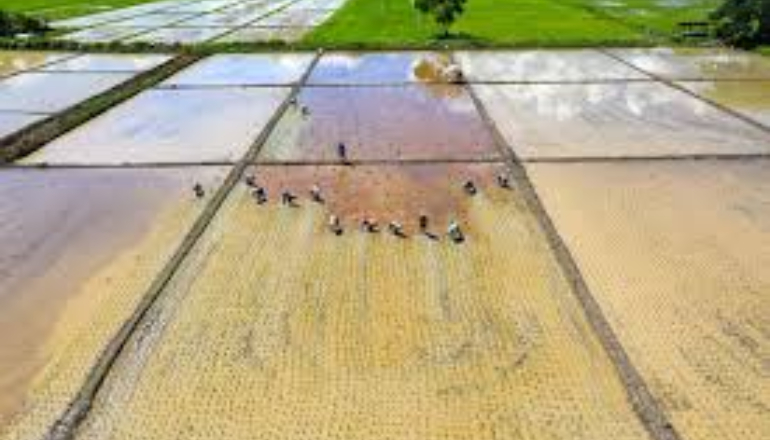India needs a water vulnerability index!
Despite significant investment, India’s mismanagement of its water resources—especially in agriculture—is a serious problem.
This is because of poor public policy, ineffective program execution, and obliging legislators.
The DCM Shriram Foundation and Sattva Knowledge Institute conducted a comprehensive study to understand the intricate aspects of water scarcity and its impact on Indian agriculture.
The report titled Transforming Crop Cultivation: Advancing Water Efficiency in Indian Agriculture. highlights the challenges in growing water-intensive crops like sugarcane and rice, underscoring the fundamental link between water and agriculture.
According to the study, less than 20% of India’s total cultivable area is currently planted to food grains using water-efficient crop cultivation techniques, particularly irrigation.
Noting that despite several industry, governmental, and charitable initiatives, the low adoption rate persists, it called for an index to measure water vulnerability.
The India scenario:
India’s agriculture sector currently accounts for 90.3% of its water withdrawals, highlighting its significant water-intensive nature.
The agriculture sector, primarily through irrigation, accounts for 84.4% of the nation’s limited water supplies, with domestic and industrial sectors following closely behind.
The agricultural sector’s trend of high water use is expected to persist unless systemic changes are made to transition to sustainable methods. The projections for 2025 and 2050 suggest that this trend is likely to persist.
The systemic changes that are required will have to tackle intricate issues like the over-reliance on charitable funding, the restricted ability of initiatives to expand beyond pilot projects, and the insufficient cooperation between stakeholders.
Challenges:
The study highlights major obstacles in decision-making in short-term philanthropy, including excessive dependency on grants, lack of coordination among stakeholders, and a lack of reliable data.
India is grappling with a potential water crisis due to its growing population and limited freshwater resources, exacerbated by its heavy reliance on rainwater for agriculture. With only 4% of global freshwater resources and 17% of the global population, swift thinking and innovative solutions are crucial.
The report on local agriculture ecosystems suggests utilizing science and data for informed decision-making and fostering closer collaboration among the ecosystem for collective action.
Solutions:
To tackle these issues, it’s crucial to support Local Agricultural Ecosystems (LAE) and facilitate their scalability across state lines. The LAE-based solutions will enable localized water-efficient techniques for individual farmers and regions, requiring effective government and industry involvement for scale.
The report suggests that long-term solutions to the water crisis in agriculture will involve sustainable financing, partnerships with public and private sectors, and diversification of funding sources.
The recommendations:
The report, backed by over 40 experts and over 50 public reports, offers three feasible suggestions for enhancing water efficiency in agriculture.
Create a freely accessible tool that can provide customized methods and approaches that are contextualized for LAEs. The goal is to empower policymakers, smallholder farmers, and industry participants to make informed decisions promoting sustainable practices at the local level by providing tailored recommendations.
Develop a Water Vulnerability Index: This will facilitate data-driven and scientifically informed business, policy decisions, and water management techniques.
Create a framework for cooperative action between key players in the ecosystem to foster shared commitments, to utilize the industry’s potential to support increased adoption of water-efficient agricultural practices. The goal of this framework is to support group advocacy and learning initiatives.
The way forward:
India can enhance water efficiency on farms by transitioning from pilot models to regionally specific programs and providing smallholder farmers with the necessary skills and knowledge.
The private sector and philanthropy will need to take a strong stewardship role in these initiatives if they are to succeed. Encouraging innovation in Indian agriculture to preserve and conserve this essential resource will bring us closer to the goal of preventing further declines in per capita water availability by 2050, as projected.

